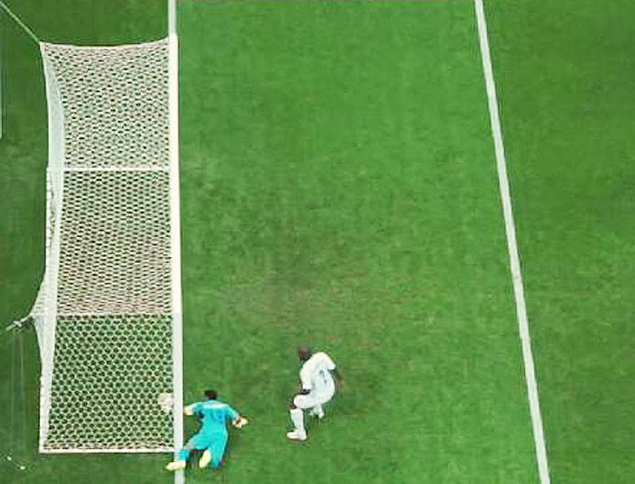Latest Photo Galleries
Brazilian Markets
17h36 Bovespa |
-0,07% | 124.646 |
16h43 Gold |
0,00% | 117 |
17h00 Dollar |
+0,29% | 5,1640 |
16h30 Euro |
+0,49% | 2,65250 |
ADVERTISING
FIFA Goalline Technology Is Not Infallible
06/17/2014 - 10h03
Advertising
RAFAEL REIS
SPECIAL ENVOY TO RIO
ROBERTO DIAS
SPECIAL ENVOY TO CURITIBA
Technology used by Fifa to detect whether the ball has or has not crossed the goalline may be considered an advancement in the sport that is mostly associated with refereeing errors, but it is not completely reliable.
Fifa demands a margin of error of 1.5cm (less than 1 inch) - a measurement that, two years ago, was twice this size.
There are three companies in the world that are approved to use this technology in Fifa's official tournaments.
The German company GoalControl was chosen to provide its services at this year's World Cup - the first edition of the tournament to make use of this tool - and promises to be precise to 5 millimeters, more precise than what is required.
According to Fifa the technology was approved for the World tournament after it underwent more than 2.400 tests in all 12 stadiums. It encompasses seven cameras in and around the goal (see table on the next page), which inform the referee via a message to his watch if the ball crossed the goalline.
One second after the shot the referee receives a message saying whether it was or wasn't a goal, albeit the final decision remains up to him.
FALSE CONFIDENCE
There is no infallible technology that can truly extinguish the uncertainties inherent to this sport, Professor Harry Collins explains, a researcher of artificial intelligence at the University of Cardiff, Wales.
"Technologies do exist, and may provide results with a very small margin of error."
The problem, he says, is not to do with the technologies per se, but in their presentation to the public as an absolute truth.
"The way in which the tool is presented, as uncertainty put forward as certainty, is what bothers us", he says.
Collins has carried out research in the area next to that of his colleague's, Robert Evans, focusing instead on cricket, the sport which they believe is exemplary of the use of this type of technology.
"[In cricket] the uncertainty of the simulation is explicit. Additionally, there is a category called the "referee's decision" that is used in scenarios where the estimate created by the computer is included in the margin of error".
These researchers have pointed out as positive the fact that Fifa is not using the system to represent the real game - for example, the field is blue, a change that illustrates this.
Nevertheless, they criticise that the distance between the ball and the line is not given; the technology only informs whether the ball crossed the goalline or not.
This is a problem also seen in tennis, a sport that has also employed this technology to resolve uncertainties. When a player calls for a challenge the computer creates an estimate of the trajectory of the ball. This analysis is also subject to error, but this is not said.
The use of this technology in football after many years of criticism towards Fifa, has been praised by football professionals taking part in this World Cup.
"Technology is a great thing" the France manager Didier Deschamps said, the first national team to benefit from GoalControl at this year's World Cup, in the match against Honduras.
The goalline system confirmed the second goal by the French squad in the 3-0 match, which took place last Sunday.
This goal was the conversation topic at bars and it certainly attracted more attention than it would have before the electronic eye started to be used.
The mix up happened because the screen first showed the message "no goal", which corresponded to Benzema's shot that hit the post. The message "goal" then appeared straight afterwards, during the simulation of the whole move, when the goalkeeper Valladares pushed the ball into the goal.
Complaints from the Hondura's manager, added to the lack of understanding by supporters has made Fifa reconsider the way it will present the images created by the tool, although changes have not been confirmed.
According to Fifa, the equipment used by GoalControl will remain installed in Brazil's stadiums and will continue to be run by this entity for one year after the end of the World Cup.
For the time being the technology can only be used to determine if the ball has or has not crossed the goalline, but Joseph Blatter, Fifa's president, says it can also be used for checking offside positions or potential penalties.
Translated by CRISTIANE COSTA LIMA
Read the article in the original language
| Reprodução | ||
 |
||
| The use of this technology in football has been praised by football professionals taking part in this World Cup |



